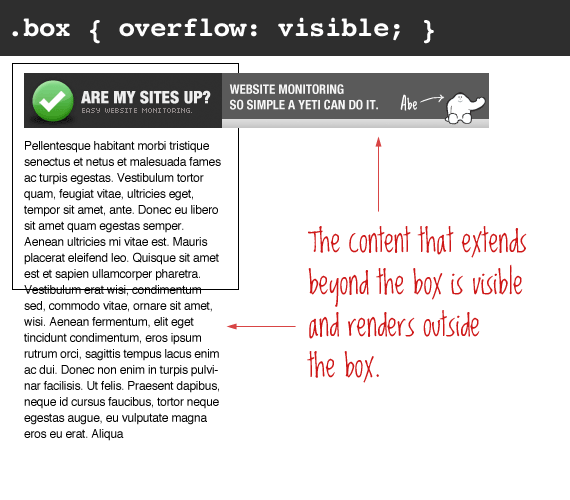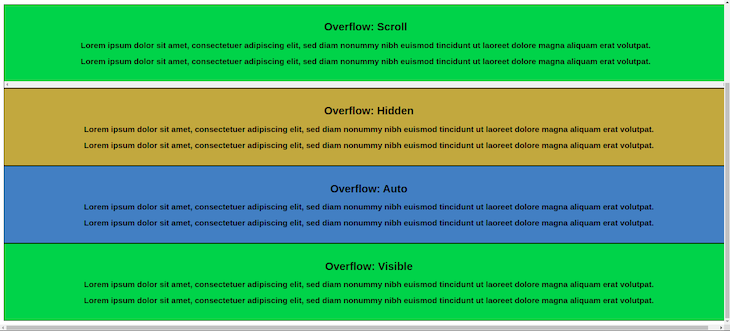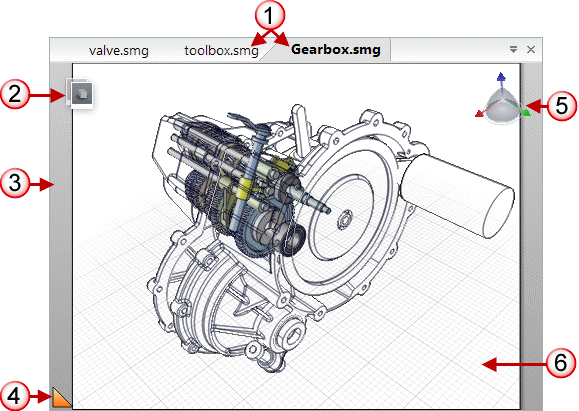Element Is Outside Of The Viewport
In today’s digital age, user experience plays a crucial role in determining the success of a website or application. One of the key factors that can greatly affect user experience is the positioning of elements within the viewport. When elements are placed outside of the viewport, it can lead to a number of negative consequences, including impaired accessibility, decreased usability, and negative impact on loading speed and performance.
The Definition and Causes of Elements Outside of the Viewport
1. Understanding the Viewport and Element Positioning
The viewport refers to the visible area of a web page that is displayed on the user’s screen. It may vary in size depending on the device being used, such as a desktop computer, laptop, tablet, or mobile phone. Proper positioning of elements within the viewport ensures that users can easily interact with them without the need for excessive scrolling or zooming.
2. Common Causes of Elements Being Outside of the Viewport
There are several reasons why elements may end up outside of the viewport. One common cause is the use of fixed positioning or absolute positioning without considering the viewport dimensions. Another cause could be incorrect calculations or assumptions made during the design or development phase. Additionally, elements may also be pushed outside of the viewport due to unpredictable user actions such as resizing the browser window.
The Negative Consequences of Elements Outside of the Viewport
1. Impaired Accessibility for Users
Elements placed outside of the viewport can have a significant impact on the accessibility of a website or application. Users with disabilities or those who rely on screen readers may find it difficult or even impossible to access and interact with these elements. This can lead to a frustrating user experience and may result in these users abandoning the site altogether.
2. Decreased Usability and Navigation Difficulties
When elements are placed outside of the viewport, it often requires users to perform unnecessary actions such as scrolling or zooming to access them. This can create a sense of inconvenience and frustration, as users may feel that the site or application is not optimized for their device. Additionally, if key navigation elements are placed outside of the viewport, users may have difficulties finding their way around the site or app.
3. Negative Impact on Loading Speed and Performance
Elements outside of the viewport can also have a detrimental effect on the loading speed and overall performance of a website or application. When unnecessary elements are loaded, it can increase the page size, resulting in longer loading times. This can lead to higher bounce rates and lower user engagement, as users may become impatient and move on to faster-loading alternatives.
The Importance of Responsive Design in Mitigating Elements Outside of the Viewport
1. Media Queries and Adaptive Layouts
Responsive design plays a crucial role in ensuring that elements remain within the viewport across different devices and screen sizes. By using media queries and adaptive layouts, designers and developers can create flexible and fluid designs that adapt to the dimensions of the viewport. This allows for a seamless user experience regardless of the device being used.
2. Mobile-First Approach and Screen Size Considerations
Adopting a mobile-first approach to design can greatly mitigate the issue of elements outside of the viewport. By prioritizing the needs of mobile users and considering the smallest screen size first, designers can ensure that important elements are visible and accessible on all devices. This approach encourages a more user-centered design process and helps address any potential issues before they become significant problems.
3. Implementing Proper CSS and HTML Techniques
Proper use of CSS and HTML techniques can also contribute to mitigating elements outside of the viewport. CSS properties such as “overflow” and “scroll” can be utilized to control the visibility and behavior of elements, ensuring that they remain within the viewport when necessary. Additionally, using semantic HTML markup can provide a solid foundation for responsive design and help optimize the rendering of elements on different devices.
Best Practices for Handling Elements Outside of the Viewport
1. Prioritizing Important Elements on Different Devices
Identifying key elements and prioritizing their visibility based on device can greatly enhance the user experience. By strategically placing elements within the viewport, designers can ensure that users can quickly access the most important information or functionality without excessive scrolling or zooming.
2. Implementing Scrolling and Overflow Behaviors
When dealing with larger amounts of content, implementing scrolling and overflow behaviors can provide a more seamless user experience. By employing techniques such as sticky headers or fixed navigational menus, designers can ensure that important elements remain visible even when the user scrolls further down the page.
3. Utilizing Responsive Design Frameworks and Libraries
There are numerous responsive design frameworks and libraries available that provide pre-built solutions for handling elements outside of the viewport. These frameworks, such as Bootstrap or Foundation, offer a range of responsive components and layouts that can be easily customized to suit specific project needs. Utilizing these resources can help save development time and ensure a consistent and optimized user experience.
Tools and Techniques for Identifying and Resolving Elements Outside of the Viewport
1. Browser Developer Tools and Inspection
Most modern web browsers come equipped with developer tools that allow designers and developers to inspect and manipulate the elements on a web page. By using these tools, it becomes easier to identify and debug elements that may be placed outside of the viewport. This can be particularly helpful during the development and testing phases of a project.
2. User Testing and Feedback Collection
Involving users in the testing process can provide valuable insights into the user experience of a website or application. By observing how users interact with the interface and collecting their feedback, designers and developers can identify any issues related to elements outside of the viewport. This feedback can then be used to make necessary adjustments and improvements.
3. Continuous Monitoring and Performance Optimization
Regularly monitoring and optimizing the performance of a website or application is crucial in addressing elements outside of the viewport. By regularly conducting performance tests and audits, designers and developers can identify any areas that need improvement, such as excessive page size or slow loading times. Implementing performance optimization techniques can help ensure a smooth and efficient user experience.
Conclusion
Elements placed outside of the viewport can have a significant impact on user experience. Impaired accessibility, decreased usability, and negative effects on loading speed and performance are just a few of the consequences that can arise. However, through the use of responsive design techniques, proper CSS and HTML implementation, and best practices for handling elements outside of the viewport, these issues can be effectively mitigated. By prioritizing the needs of users and adopting a user-centered design approach, designers and developers can create interfaces that provide a seamless and optimized experience, regardless of the device being used.
Check Element Visibility In Viewport: Essential Techniques And Best Practices
Keywords searched by users: element is outside of the viewport selenium check if element is in viewport, how to check visibility of element in playwright, playwright viewport, playwright scroll to element
Categories: Top 22 Element Is Outside Of The Viewport
See more here: nhanvietluanvan.com
Selenium Check If Element Is In Viewport
To begin with, it is essential to understand what it means for an element to be in the viewport. In web development, the viewport refers to the visible area of a web page. When a page is loaded, only a part of it is initially visible, and as the user scrolls, different portions of the page become visible or hidden.
When testing web applications, it is often necessary to verify if an element is visible on the screen or if it is hidden due to scrolling. Selenium provides several capabilities to achieve this task.
One straightforward method to check if an element is in the viewport is by using the `isDisplayed()` method in Selenium. This method returns `true` if the element is visible on the browser screen and `false` if it is hidden. However, it is important to note that `isDisplayed()` only checks if the element is displayed at all, regardless of whether it is within the viewport or not. Therefore, this method alone may not be sufficient for our purpose.
To overcome this limitation, we can utilize JavaScript to determine if an element is in the viewport. Selenium provides the `executeScript()` method, which allows executing JavaScript code within the context of the browser. By using JavaScript’s `getBoundingClientRect()` method, we can obtain the position and dimensions of an element relative to the viewport.
For example, considering an element with the id `myElement`, the following code snippet demonstrates how to determine if it is in the viewport:
“`
WebElement element = driver.findElement(By.id(“myElement”));
boolean isInViewport = (boolean) ((JavascriptExecutor) driver)
.executeScript(“var rect = arguments[0].getBoundingClientRect();”
+ “return (rect.top >= 0 && rect.left >= 0 && ”
+ “rect.bottom <= (window.innerHeight || "
+ "document.documentElement.clientHeight) && "
+ "rect.right <= (window.innerWidth || "
+ "document.documentElement.clientWidth));", element);
```
In the above example, we retrieve the position of the element's bounding rectangle using `getBoundingClientRect()`. Then, we check whether the top, left, bottom, and right coordinates of the rectangle are within the viewport. If all these conditions are met, the element is considered to be in the viewport.
Now, let's move on to some frequently asked questions about checking if an element is in the viewport using Selenium:
Q: Why is it important to verify if an element is in the viewport?
A: Verifying if an element is in the viewport ensures that the element is visible to the user during web application testing. It helps to catch any issues related to hidden or inaccessible content, improving the overall user experience.
Q: Are there any disadvantages to using JavaScript for this check?
A: While using JavaScript provides a robust solution, it has some potential drawbacks. For instance, if the browser has disabled JavaScript, this approach may not work. Additionally, using JavaScript might introduce some performance impact, especially when dealing with a large number of elements.
Q: Can Selenium detect if an element becomes visible due to scrolling?
A: No, Selenium cannot automatically detect if an element becomes visible after scrolling. Instead, you would need to implement a mechanism that triggers scrolling and then check for element visibility.
Q: What are some alternative libraries or tools for checking viewport visibility?
A: Apart from Selenium, several other tools and frameworks can be used to check if an element is in the viewport. Some popular examples include Cypress, Protractor, and Puppeteer.
In conclusion, checking if an element is in the viewport is an important aspect of web application testing. Selenium, with its `isDisplayed()` method and the ability to execute JavaScript, provides powerful capabilities for performing this check accurately. By understanding the concepts and techniques discussed in this article, you can enhance your Selenium testing skills and ensure robust element visibility verification.
How To Check Visibility Of Element In Playwright
Playwright is a powerful automation library that enables developers to build reliable and efficient browser automation scripts. While working with Playwright, one common task is to check the visibility of elements on a webpage. In this article, we will explore various techniques to achieve this and ensure that elements are visible before interacting with them programmatically.
Why Checking Element Visibility is Important
Checking the visibility of an element is crucial for automation scripts as it allows developers to ensure the element is visible to users. Without this check, scripts may perform actions on invisible elements, resulting in inaccurate test results or even script failures. Verifying element visibility helps maintain the reliability of automation scripts, ensuring they accurately simulate user interactions.
Methods to Check Element Visibility in Playwright
Playwright provides several methods and properties to determine whether an element is visible or not. Let’s delve into the most commonly used techniques:
1. isHidden(): The `isHidden()` method returns true if the element is not visible, either due to being hidden by CSS or having a width and height of 0. Conversely, it returns false if the element is visible on the page. This method helps determine if an element is intentionally hidden from users.
2. isVisible(): The `isVisible()` method checks if the element is both displayed and visible to users. Unlike `isHidden()`, it considers whether the element is also within the viewport boundaries. It returns true if the element is visible; otherwise, it returns false.
3. isEnabled(): The `isEnabled()` method is useful for determining if an element is currently enabled for interaction. It verifies if the element is not disabled or obstructed by any other properties that prevent user interaction.
4. isIntersectingViewport(): This method checks if an element intersects with the current viewport. It is particularly helpful when working with elements that appear only when the user scrolls down the page. `isIntersectingViewport()` provides a pragmatic way of verifying if elements are visible within the current viewport.
These methods can be applied to check the visibility of various HTML elements such as buttons, images, input fields, checkboxes, or any other interactable components.
Frequently Asked Questions (FAQs)
1. How can I wait for an element to become visible before interacting with it?
Playwright provides a utility called `waitUntilVisible`. This utility can be employed to wait until an element becomes visible before proceeding with further interactions. For example, you can use `await page.waitForSelector(‘button’, { visible: true });` to wait for a button to become visible before clicking it.
2. What if an element is outside the viewport but still visible on scrolling?
In such cases, you can use Playwright’s `scrollIntoViewIfNeeded` method to ensure the element is scrolled into view before performing interactions. This function will bring the element within the visible viewport area, allowing you to verify its visibility accurately.
3. Are there any alternatives to using visibility checks for element verification?
While visibility checks are generally recommended for reliable automation scripts, you can also use other auxiliary methods like checking the existence of an element or waiting for specific CSS properties to change. However, these alternative methods may not always provide accurate visibility verification, so it’s advised to prioritize visibility checks when possible.
4. Can I verify visibility for elements within iframes?
Yes, Playwright provides extensive support for working with iframes. To check the visibility of an element within an iframe, you need to navigate to the frame using `frame()` or `waitForSelector()` methods, and then apply the appropriate visibility checks.
Conclusion
In Playwright, checking the visibility of elements is a critical aspect of building robust automation scripts. By using techniques like `isHidden()`, `isVisible()`, `isEnabled()`, and `isIntersectingViewport()`, developers can ensure the elements are visible before interacting with them programmatically. Additionally, Playwright offers utilities like `waitUntilVisible` and `scrollIntoViewIfNeeded` to facilitate working with element visibility seamlessly. By incorporating these practices, you can build reliable and accurate automation scripts using Playwright.
Images related to the topic element is outside of the viewport

Found 17 images related to element is outside of the viewport theme










Article link: element is outside of the viewport.
Learn more about the topic element is outside of the viewport.
- Is an element that’s outside the viewport considered visible?
- Quickly spot out-of-viewport elements – DevTools Tips
- How to check if any part of an element is out of the viewport …
- Visible radio button cannot be clicked (“element is outside of …
- Overflow – method to find elements outside the viewport
- Viewport concepts – CSS: Cascading Style Sheets | MDN
- Elements Visible In The Current Viewport – Gleb Bahmutov
- Thread: How to adjust elements that fall outside the viewport